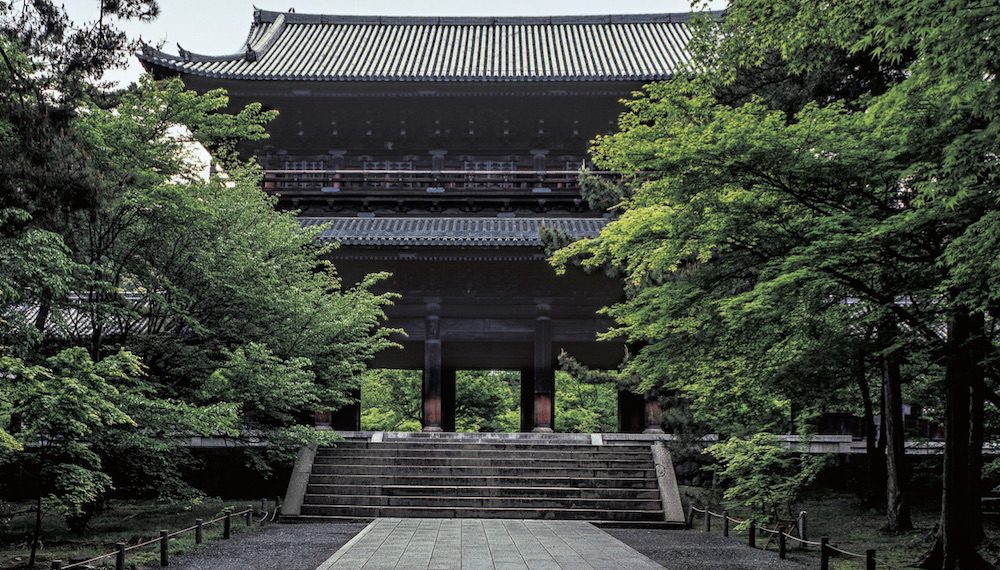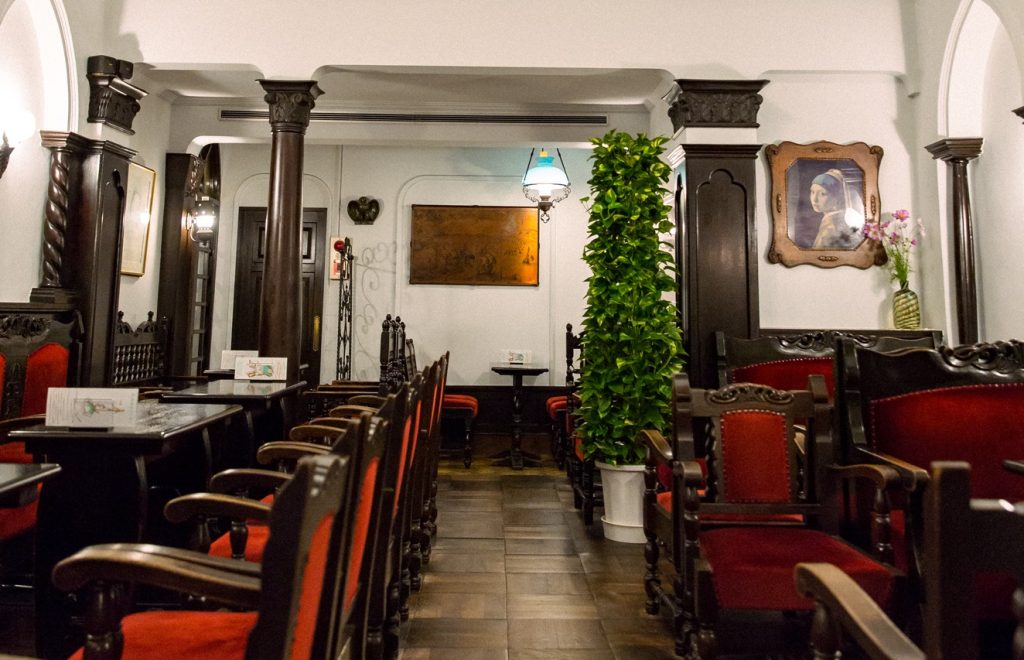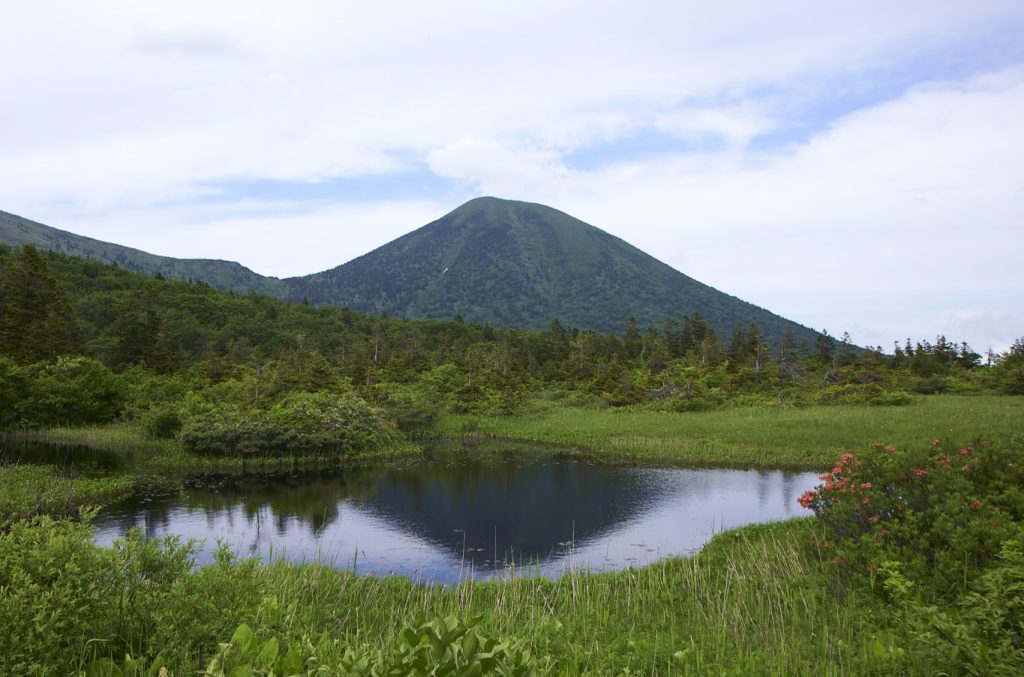It is common all over the world for adults and children alike to be excited by the summer season. If you have time to spare, why not visit one of the outlying islands beyond the mainland? We will introduce you to Sado (佐渡).
Culture born from exiled aristocracy
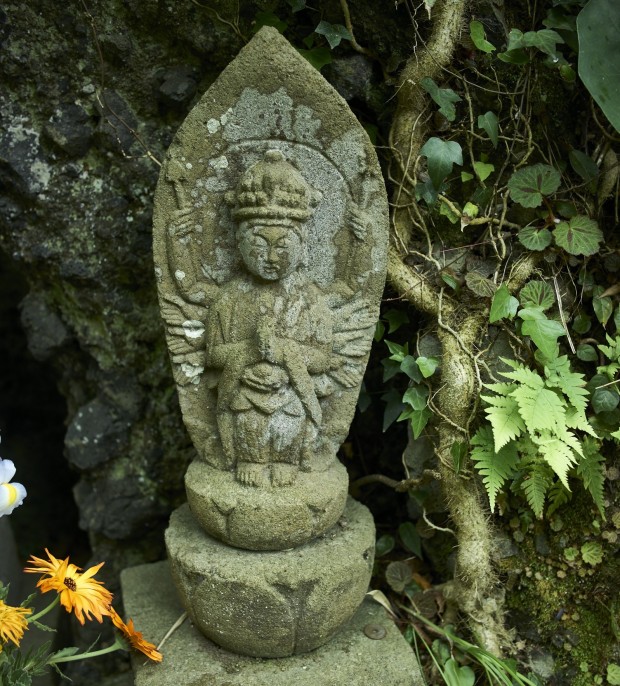
There are temples on Sado Island with the same names as famous temples in Kyoto and Nara. However the Kanji letters are read differently. These temples were probably created because of the deep connection with the many aristocrats and intellectuals who were exiled to Sado. If you trace the cultural heritage, which is steeped in a curious history, you will experience the ancient connection with the capitals of Kyoto and Nara. Let’s follow in their far-reaching footsteps.
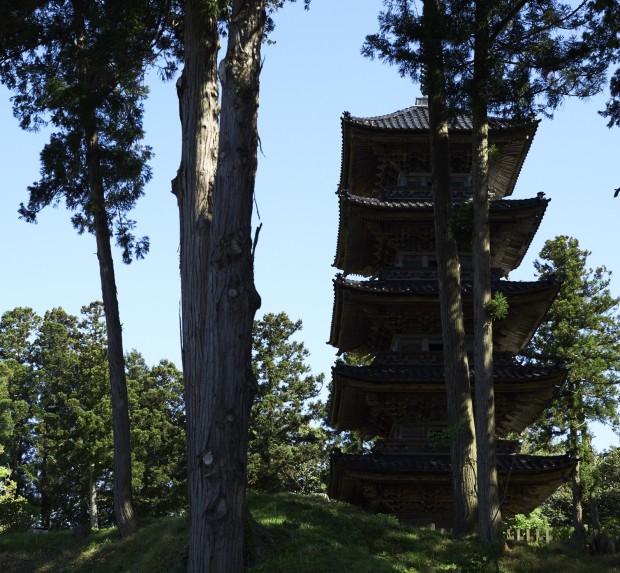 The five-storey pagoda of Myosenji (妙宣寺) Temple, completed in 1825, is regarded as an unfinished work as each level lacks a balustrade, but this gives it an air of rusticity and is part of its charm.
The five-storey pagoda of Myosenji (妙宣寺) Temple, completed in 1825, is regarded as an unfinished work as each level lacks a balustrade, but this gives it an air of rusticity and is part of its charm.
Myosenji Temple is located about 30 minutes’ drive from Ryotsu Port (両津) and is said to be the predecessor of Abutsudera Temple (阿佛寺), where Abutsubo Nitoku (阿佛房日得), a direct disciple of Nichiren Shonin (日蓮聖人), lived. The wooden five-storey pagoda was built by a local temple carpenter in the late Edo period and is designated a National Important Cultural Property. The contrast between the rural landscape around the temple and the majestic five-storey pagoda is so vivid that it is easy to lose track of time. Be sure to get a red seal from the venerable Abutsubou (阿佛房) to commemorate your trip.
 The Daizen (大膳) Shrine is an old shrine dedicated to Hino Suketomo (日野資朝), who fell in the Shochu Incident (正中の変, 1324), and to Daizenbo (大膳坊), a mountain priest who helped avenge the death of his son, Kumawakamaru (阿新丸).
The Daizen (大膳) Shrine is an old shrine dedicated to Hino Suketomo (日野資朝), who fell in the Shochu Incident (正中の変, 1324), and to Daizenbo (大膳坊), a mountain priest who helped avenge the death of his son, Kumawakamaru (阿新丸).
A five-minute walk from the Myosenji Temple is the Noh stage of the Daizen Shrine. The first thing that catches the eye is the distinctive thatched roof, but what is noteworthy is the kagami-ita (鏡板= scene panel). Usually, the kagami-ita of a Noh (能) stage depicts only an old pine tree, but the one at Daizen Shrine is unusual in that it depicts a pine tree and a sunflower together. Both the five-storey pagoda at Myosen-ji Temple and the Noh stage at Daizen Shrine are cultural heritage sites that clearly show the high cultural standards of the area. If you want to go further, the Noh stage at Kusakari (草刈) Shrine, which has the same thatched roof as the one at Daizen Shrine, and the Noh stage at Haguro (羽黒) Shrine, which has the best atmosphere of a Shinto forest, as well as the ancient Noh stages at Ushinoo (牛尾) Shrine and Kasuga (春日) Shrine, each with its own unique flavour. Be sure to compare them with each other!
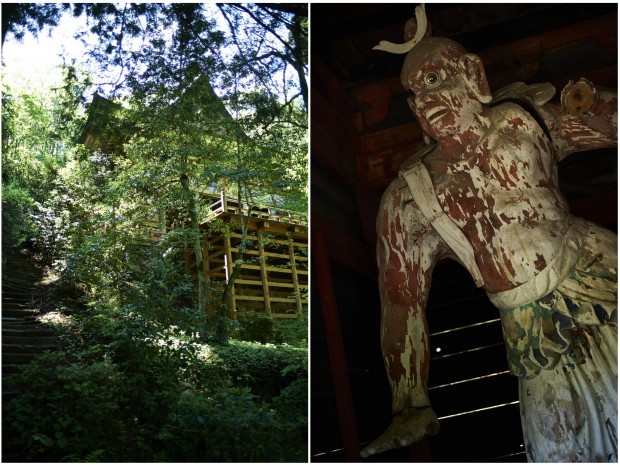 Left: Seisuiji (清水寺), Right: Kongorikishi zo (金剛力士像) from Chokokuji (長谷寺)
Left: Seisuiji (清水寺), Right: Kongorikishi zo (金剛力士像) from Chokokuji (長谷寺)
Now, ‘Seisuiji (清水寺)’ and ‘Chokokuji (長谷寺)’ are two temples where the fact that they share the same kanji as the famous temples in the capitals, shows that they are with no doubt inspired heavily by them. Seisuiji is said to have been built in 808 in imitation of Kiyomizu-dera Temple in Kyoto. The breathtakingly compelling Guze-den (救世殿) is exactly like the Kiyomizu stage, and the path of stone steps from the Niomon (仁王門) gate to the stage and the rows of large cedar trees towering high into the sky celebrate the beauty of the old temple.
Chokokuji is said to have been modelled on Hase-dera Temple in Yamato, Nara. Zeami (世阿弥) arrived in a place called Tada (多田) on Sado Island and was transferred via Chokokuji to Manpukuji (万福寺) and then to Shohoji (正法寺). Zeami wrote about that time in his collection of short songs, Kintosho (金島書). Chokokuji has four Juichimen kannombosatsu ryuzo (木造十一面観音立像, standing wooden eleven-faced Kannon statues), and three of them, including the principal image, which is an Important Cultural Property, are only opened once every 33 years.
Travel guide to enjoy Sado more!
[Eating]
Soba set from ‘Mozemu’
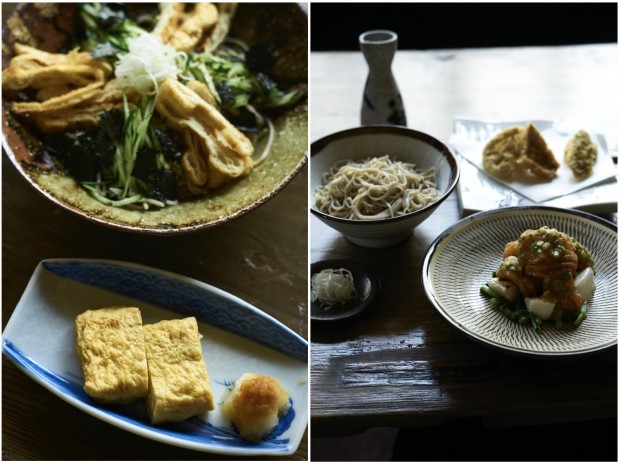
Soba noodles served in a 60-year-old house. You can choose from either ago-deshi (アゴ出汁) or katsuo dashi for the dipping sauce. For lunch, the soba set with a small bowl of cooked food and dessert is a great value. Soba kaiseki (懐石), which focuses on local ingredients from the mountains and sea, is always accompanied by carefully selected seasonal tempura.
Website:Mozemu (茂左衛門)
‘Chozaburo’ burikatsu bowl and chirashi-zushi
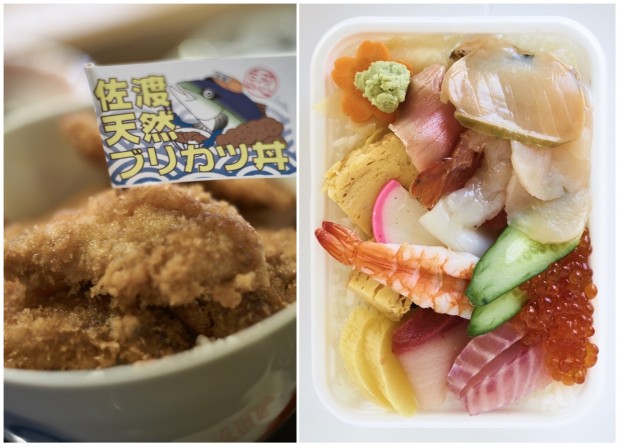
The new local delicacy, natural burikatsu bowl rice bowl, is a masterpiece made from locally produced rice flour and soaked in a special ago-dashi soy sauce. The taste of the yellowtail soaks up the flavour of the fish. Chirashi-zushi take-away is also available on the way home. The fresh seafood is in huge portions and at a great price.
This article is translated from https://intojapanwaraku.com/rock/travel-rock/1484/








